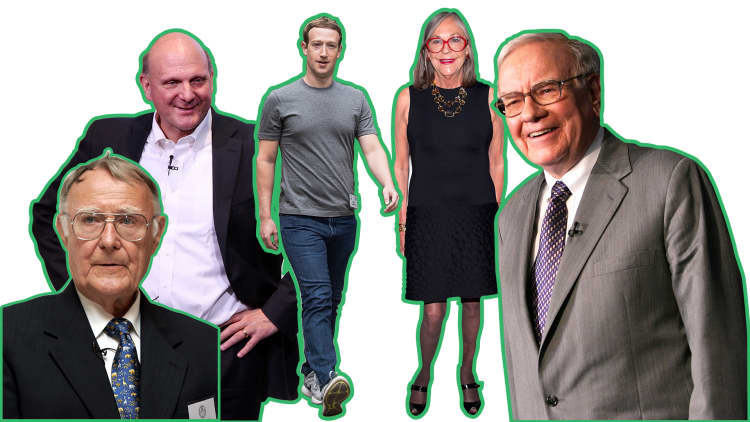When Steve Ballmer was 24 years old, he dropped out of Stanford University’s business school to join his former Harvard classmate Bill Gates at Gates' tech start-up Microsoft. Although it unnerved his parents, the decision allowed Ballmer to work for one of the fastest growing companies in the country and go from Gates' assistant to the company’s CEO.
Today, he’s one of the richest people in America, with an estimated net worth of $40.7 billion. Here's how he made it happen.
He seized opportunities
Ballmer's education set him on the path to success from a young age: He was the valedictorian of his high school class, graduated magna cum laude from Harvard and got a job as an assistant product manager at Proctor and Gamble. After working there for two years, Ballmer went to Stanford Graduate School of Business to get his MBA but, less than a year into the program, Ballmer decided he wanted to leave and join Microsoft.
"My dad said, 'What the heck is software?' and my mom said, 'Why would a person ever need a computer?'" Ballmer recalled in an interview with Carlyle Group co-founder David Rubenstein on the July 18 episode of "The David Rubenstein Show." "They said, 'OK, OK, we hear you, but if it doesn't work out, you'll go back to business school right?' And I said 'Right,' and I never came back."
He wasn't afraid to start small
“I started as assistant to the president. I was Bill’s assistant, basically: chief cook and bottle washer,” Ballmer said. “I set up the accounting, which there was some, but we needed to professionalize. I was the HR department, I hired everybody.”
Gates offered Ballmer a $50,000 base salary — "which looked good in that day and age," Ballmer said — in addition to 5 to 10 percent equity in the company and 10 percent of the profit growth he generated.
He made himself indispensible
Gates, who dropped out of Harvard in 1975 to launch Microsoft, at first insisted on doing everything from coding Microsoft software to interviewing new candidates, because he had a bad habit: he wouldn't delegate. Hiring Ballmer, his college friend, changed that: Ballmer soon taught him "how to hire lots of people — really good people — and create organizations and teams,” Gates has said.
In 1980, Ballmer played a crucial role in the company's negotiations with IBM, a company that pioneered computing technology for businesses and government. IBM had approached Microsoft for help in making computers available to everyday people.
"When IBM came the first time about their personal computer, I became the kind of salesman on IBM. Why? I knew how to wear a tie," Ballmer said. "I was about the only guy around the place and Bill said, 'You have a tie and a suit, why don't you come to the meeting?'"
Not long after joining the team, Ballmer helped negotiate and land a huge deal with IBM to get the company to run Microsoft software on its computers. He worked through several executive titles and by 1998, Gates asked Ballmer to be the president of Microsoft, which "was another No. 2 position, and I was fine with that," Ballmer said.
In 2000, Gates passed the position of CEO to Ballmer, who then led the company through a number of challenging moments, including the bursting of the dot-com bubble and a famous anti-trust legal battle. Ballmer also helped Microsoft grow by launching Xbox, acquiring Skype and building up its $20 billion enterprise business.
He thought long-term
Ballmer had led Microsoft for nearly 15 years when he announced his retirement and then stepped down as CEO in 2014. He held onto his 4 percent stake in the company, though, which contributes a considerable amount to his wealth and makes him the company's largest individual shareholder.
“When I was CEO, I just didn’t think it was right" to sell my shares, Ballmer told Rubenstein. “When I left, I still loved the company. I did a little to diversify slightly, I put some money aside for charity, but I’m a loyal dude. I still drive Fords and I still own Microsoft stock.”
Like this story? Subscribe to CNBC Make It on YouTube!
Read more:


